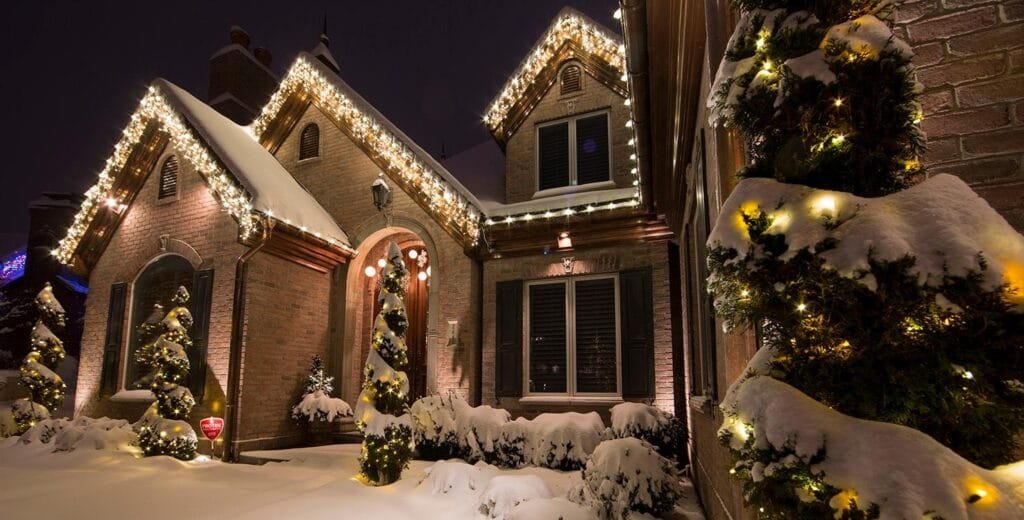Many people love using solar garden lights to add beauty to their gardens or courtyards. But as the temperature drops and winter sets in, a common concern arises: Do solar lights work well in cold weather? The last thing anyone wants is for their decorative lights to stop functioning when the cold hits. The good news is, with the right care and setup, solar lights can thrive even in freezing conditions. Let’s explore how you can ensure your solar garden lights perform at their best, no matter how cold it gets.

Yes, solar lights can work in cold weather, but their performance may be affected by factors like reduced sunlight, battery performance, and the type of light you use. Solar lights are designed to withstand various weather conditions, including snow and freezing temperatures. However, the colder it gets, the more resistance there is in the battery, meaning it holds less charge and takes longer to charge. Choosing high-quality, weather-resistant lights and optimizing their placement can help maintain their efficiency.
Now that we know solar lights can work in cold weather, let’s dive into the best practices for optimizing their performance, as well as the types of solar lights most suitable for winter use.
Do Garden Solar Lights Work in Winter?
Yes, garden solar lights can work in winter, but they perform best when they have enough sunlight to charge. During winter, the sun is weaker, and the days are shorter, which means solar lights may struggle to gather enough power. However, high-quality solar lights designed for cold weather can still operate well in these conditions. It’s important to ensure that the solar panels are free from snow or ice and positioned to capture as much sunlight as possible.
How Can I Get My Solar Lights to Work in Winter?
To ensure your solar garden lights work efficiently during the winter months, follow these simple steps:
- Maximize Sunlight Exposure: Position your solar lights in areas that receive direct sunlight throughout the day. This may mean moving them to a different spot or repositioning the panels to face the sun.
- Keep Panels Clean: Snow, ice, or dirt can block the solar panels, reducing their ability to collect sunlight. Make sure to regularly clean the panels and remove any snow or debris that may obstruct the light.
- Check for Obstructions: Ensure there are no trees, buildings, or other obstructions casting shadows on the solar panels, especially during the daytime when they need the most sunlight.
By following these tips, you’ll maximize the energy your solar lights gather and ensure they function effectively even in cold weather.
How Cold is Too Cold for Solar Panels?
Solar panels are designed to function in a wide range of temperatures, from -40°F to +185°F. However, extreme cold can affect their efficiency. When temperatures dip below freezing, the chemical reactions in the battery can slow down, making it harder for the lights to store and release energy. This doesn’t mean that your solar lights will stop working altogether, but they may not shine as brightly or last as long through the night.
If you’re in an area with harsh winter conditions, it’s essential to check the battery life more often, as batteries can wear down faster in extreme cold. Opt for solar lights with high-quality batteries rated for low temperatures for the best results.
How Do You Charge Solar Garden Lights in the Winter?
Charging solar garden lights in the winter can be a bit trickier due to the reduced sunlight. However, there are several ways to ensure your solar lights still receive enough energy:
- Reposition the Lights: During the winter months, the sun is lower in the sky, so you might need to move your solar lights to a sunnier spot or angle the panels directly toward the sun.
- Allow for Longer Charging Times: In winter, solar lights might need more time to charge than during the summer. Ensure that the lights are turned on only after they’ve received a full charge from the sun, which can take up to 8–10 hours of sunlight, even if it’s overcast.
- Use Solar Light Extension Cables: If your lights are located in areas with limited sunlight, you can consider using extension cables to move the solar panel to a sunnier spot while keeping the lights in their current location.
Best Outdoor Solar Lights for Winter
Not all solar lights are built to handle cold weather. When choosing solar lights for winter use, look for models that are specifically designed to work well in cold temperatures. Here are some features to look for:
- Weather-Resistant Construction: Choose lights made from durable materials such as stainless steel or heavy-duty plastic to prevent damage from snow or ice.
- High-Quality Batteries: The best solar lights for winter use come with batteries that are designed to perform well in low temperatures. Lithium-ion batteries are a good option, as they tend to perform better than alkaline batteries in cold conditions.
- Bright LED Lights: LED lights tend to be brighter and more energy-efficient, making them ideal for winter months when sunlight is scarce.
Some top-rated brands for winter solar lights include Gama Sonic, Sustainable Village, and Ring Solar Pathlight. Be sure to check for winter-specific features like enhanced battery life and water resistance.
Waterproof Outdoor Solar Lights That Work in Winter
If you live in an area that experiences a lot of rain or snow, waterproof outdoor solar lights are essential. These lights are designed to prevent water from seeping into the electronics, which could cause malfunctions. Look for lights with an IP rating of at least IP65, which means they are resistant to both water and dust.
Additionally, choose lights with tempered glass or acrylic covers that can withstand the weight of snow or the force of wind without breaking. Solar lights with these features will work reliably even during the harshest winter storms.
Do Solar Lights Work in Cloudy Weather?
While solar lights can still work on cloudy days, their performance will be significantly reduced. On overcast days, solar lights may not gather enough energy to charge fully, so you might notice a decrease in brightness. However, many high-quality solar lights are designed to store energy efficiently and can still provide light even during cloudy weather.
To maximize the charging potential on cloudy days, consider moving your solar lights to areas where they can catch whatever available sunlight there is, such as open spaces or near reflective surfaces that bounce light onto the panels.
How Long Do Solar Lights Last in Cold Weather?
With proper care, solar lights can last for several years, even in cold weather. However, extremely cold temperatures can reduce the lifespan of the batteries over time. To extend the life of your solar lights in winter, it’s important to replace batteries regularly, especially if the lights begin to dim or don’t last as long as they used to.
In addition, you can invest in solar lights that are designed for extended use in cold weather, which often come with long-lasting batteries and durable construction. These will be more reliable throughout the winter months.
Summary
To keep your solar garden lights shining bright in the cold, choosing the right lights and maintaining them properly is key. By maximizing sunlight exposure, keeping panels clean, and opting for high-quality, weather-resistant solar lights, you can enjoy beautiful lighting in your garden all winter long. Regular maintenance, battery checks, and repositioning your lights will also help extend their performance during the colder months.
